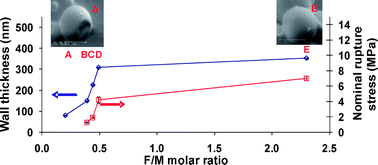Microcapsules with low content of formaldehyde: preparation and characterization†
Abstract
In the research reported here, an in situpolymerization process has been used to produce

* Corresponding authors
a
School of Chemistry, University of Birmingham, Edgbaston, Birmingham, UK
E-mail:
j.a.preece@bham.ac.uk
Tel: +44 (0)121 414 3528
b P&G Technical Centre Ltd., Whitley Road, Longbenton, Newcastle upon Tyne, UK
c School of Chemical Engineering, University of Birmingham, Edgbaston, Birmingham, UK
In the research reported here, an in situpolymerization process has been used to produce

 Please wait while we load your content...
Something went wrong. Try again?
Please wait while we load your content...
Something went wrong. Try again?
Y. Long, D. York, Z. Zhang and J. A. Preece, J. Mater. Chem., 2009, 19, 6882 DOI: 10.1039/B902832C
To request permission to reproduce material from this article, please go to the Copyright Clearance Center request page.
If you are an author contributing to an RSC publication, you do not need to request permission provided correct acknowledgement is given.
If you are the author of this article, you do not need to request permission to reproduce figures and diagrams provided correct acknowledgement is given. If you want to reproduce the whole article in a third-party publication (excluding your thesis/dissertation for which permission is not required) please go to the Copyright Clearance Center request page.
Read more about how to correctly acknowledge RSC content.
 Fetching data from CrossRef.
Fetching data from CrossRef.
This may take some time to load.
Loading related content
